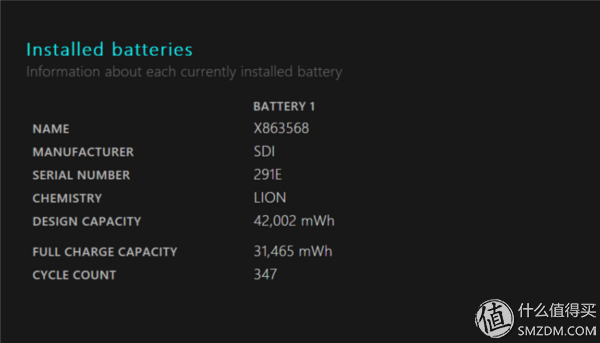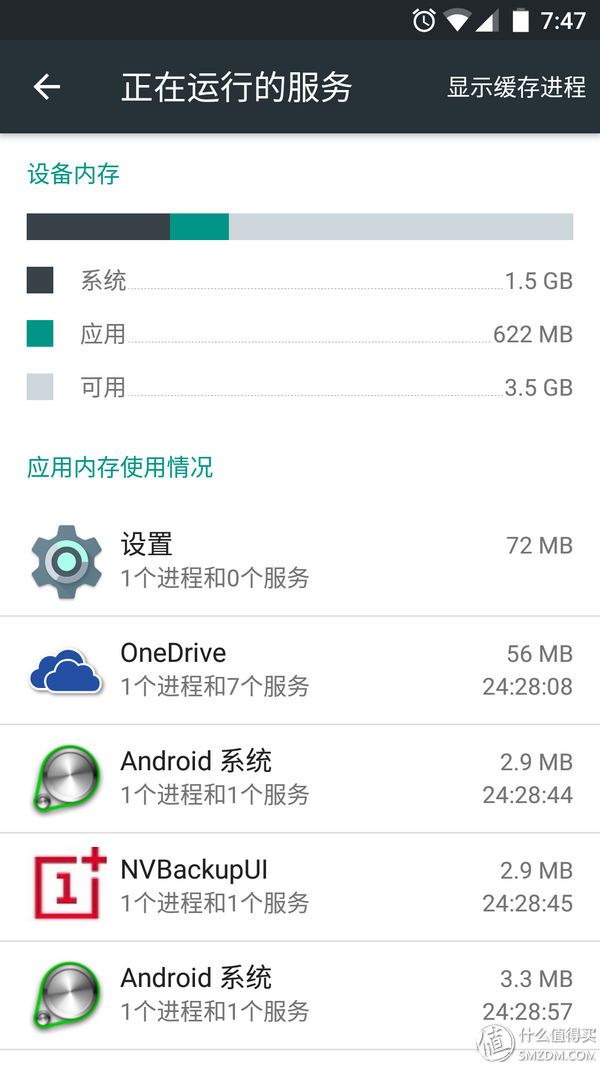One plus three is my first Android phone. I have to buy it and buy it, but it is for my parents. Since I loved the Mer UI, I have used Lumia as my mobile phone. I know that many people have heard of mobile phones that have been used by Windows Phone even more or less. It seems that the "Payment" event is still quite famous. . The Lumia 1520 I was using before had a severe second aging of the battery. The actual capacity was greatly attenuated, indicating that the battery will shut down automatically when the power consumption is about 50%. When this happened earlier, I resolved to replace the battery by myself, and after one year the problem reappeared. It appears that there is a problem with the battery or power management. Incidentally, the battery supplier is Sony. . . Also remind everyone to buy a second-hand mobile phone that cannot replace the battery, pay attention to the number of charging cycles of the mobile phone, and a well-designed battery will have significant attenuation after a few hundred cycles. My computer is generally plugged in, with only about 350 cycles, leaving only 80% of the actual capacity. Of course, the computer's battery pack may seem to degrade slightly faster than the phone. The reason why I don't continue to choose LUMIA is very simple. This stuff has to be renamed. The fate is uncertain, and in addition to the relatively few applications (secondary), the overall design is not yet mature (important). I also think of looking outside.
 Battery loss
Battery loss
At first I wanted to buy the iPhone SE, but the screen was too small (mainly) + I didn't support dual cards and I gave up. Native Android's Material Design has been known for a long time. However, my son Nexus did not update the 820's new machine, 5X screen is normal, 6P price is higher, and the frequency band is disabled. FDD only supports Band 3. Finally, I chose to add a 3 to the international version of “Oxygen OSâ€. Oxygen OS inherited 99% of the native Android experience, plus some small magic changes are quite good. In addition, the Tucao plus one is now engaged in the integration of hydrogen and oxygen, a plus as a small company, the team can understand the limited human resources, but such a system to engage in both lose their characteristics, offend the two people.
 Launcher
Launcher
 Launcher
Launcher
================== The following content is slightly professional, I have limited expressive ability, do not understand it skip it ============== ====
We all know that the modern operating system has a basic concept called "process", whether it is Windows or *nix. In simple terms, "process" is a unit of resource allocation by the operating system kernel. In-process software looks like it has continuous memory and cannot directly sense the presence of other processes. The process contains several threads. The thread is the smallest unit of scheduling. The operating system divides the CPU time into many time slices and executes the threads in turn. Because the time slice is very small, threads will feel that they are being executed continuously.
On Wiindows, Microsoft specifies that a UWP application can only have one process, and this process has a strong binding relationship with the application, when the application is in the background (ie the application on the mobile is not displayed on the screen, or the application on the PC is minimized After that), the whole process will be suspended, occupying only memory, and no longer occupy the CPU's time slice for the code to be executed.
Android applications do not have such restrictions. An application can open many processes and there is no correspondence between processes and applications. In fact, we see the Android application interface is just a component of the software called "Activty", it runs in the UI thread, the nature of navigation between different pages of the application is to switch the Activity of different pages. When it comes to the so-called "pseudo background," Activity also has a similar mechanism. When the current interface is not displayed on the screen, it will be suspended. The “application†we killed in the multi-tasking switcher is this product, not the process corresponding to this application. In fact, this kind of behavior is often not of any benefit. Because of the existence of the pause mechanism, the activity is relatively regular, and it will be faster and more power-efficient when it is reloaded after reservation.
But as I said earlier, Activity is just a component. An Android application can also include components such as Service, Receiver, Provider, and so on. Note that these components have no correspondence with processes and threads, that is, they can be spread across different or identical threads in different or identical processes. Among them, Service is a component that has no interface and can be in the background for a long time. Assuming that the user browses the web while listening to the song, the activity of the music player has already stopped. Therefore, it is appropriate to use a background service to play music. The Service does not have a binding relationship with the Activity that invoked it. Even if the Activity that called it has ended, the Service can continue to run. In fact, it is entirely possible for a Service to be invoked by multiple applications through a process/thread communication mechanism. The service is terminated only if the Service thinks it is useless and calls a function. Or, the user can view and terminate the service through the "services in progress" in the developer mode.
But things are not that simple. If Service doesn't want the user to end, then you don't want to move in non-Root situations. The previous paragraph mentioned a component called Receiver that can receive system broadcasts and start a service. System broadcasts include system startup, wireless network access changes, phone calls, and many more. So after you manually kill a service, as long as you make a call or connect to a Wi-Fi, then congratulations, it can easily revive. The problem is not that far. Imagine that Baidu Cloud can help you wake up other Baidu family bucket services when the front desk is running, or that Baidu Cloud and Baidu Post Bar and Baidu input method background services can awaken each other.
================== Popular Science End ==================
 Service situation
Service situation
 Background process (that is, Active is stopped) takes up a portion of memory and can be quickly restored
Background process (that is, Active is stopped) takes up a portion of memory and can be quickly restored
(Actually, the memory usage is not as good as possible, and 6 GB of memory is filled up to really show the effectiveness. This is the same for the PC.)
Android developers made a hypothesis that developers are good and they are wrong. Under the siege of great interests, many companies cannot adhere to the basic bottom line of “doing no evilâ€. Everyone can click the 6th version number into the developer mode to see how many services XBOX, XXIN, XXX (BAO) and others have opened, which is absolutely scary.
As for the various domestic magic reform system with permission management and background management is effective, see your own judgment, I dare not assert. Android 6.0's rights management for legacy software (developed by yourself as a legacy version of Android) is by default allowed by the manifest, rather than a dialog box that denies the default and pops a confirmation when an application requests permission. And the user can control the scope of rights management is too small, many very sensitive high-level privileges can not be prohibited, such as "view other applications and historical applications currently running" permissions.
I don't recommend using the Xposed framework here. This effect is limited when Android is still using the Dalvik virtual machine. After a certain version of Android, the ART virtual machine is forced to use a pre-compilation strategy. Using the Xposed framework will replace the ART virtual machine as a whole, eliminating some of the pre-compilation to facilitate the software change at runtime, which will have a certain impact on performance. There is a security issue, and it feels less reassuring. After all, the ART virtual machine is so important that various Android system components and applications on the Linux kernel run inside.
To use Android software with confidence, it is recommended to use a refrigerator (Root required) to “freeze†domestic or non-domestic gangsters. In fact, the application is put into a disabled state, which is similar to an unmounted state. You can also use the green guard to force the background of some applications to end.
After I was rooted, I didn't think it meant much. I added Jie Jie, so I returned to the status of not Root. The solution to rogue software is to hold the nose when you have to use it, use it to delete it, and use it with it. These softwares are like a villain. They are vulgar (interfaces are ugly) but they have certain irreplaceable capabilities (which can be used if they are kidnapped). You said that I was put into jail after he was used up, or was there Several amendments were laid before the law of the loopholes and the villain was safely left for the New Year. In addition, if this service has a more complete web version, don't install the application (By the way, Chrome for Android is easy to use, concise, gesture support is also OK, I perfectly open my browser on the PC dozens Good habits of tabs brought to the phone). QQ and WeChat software I use the old machine to hang, the new machine is not installed. If you also have Jie Jie, you can learn from me. But I guess there will be no such thing as anyone?
After a tune-up, my one-and-a-half night off flight mode lost power at about 5%. In fact, if the international system is accompanied by Google Play Services, it will have a little impact. This is a wall game and we will always try networking. My frequently used Gmail mailboxes, calendars (syncing my Outlook mailbox contacts, mail, and calendars via the Exchange ActiveSync protocol), and other family buckets such as Google Maps, relied on this service and cannot be deactivated. A better solution is Root, or a 24-hour SS, which is troublesome.
Look at the next chapter to see the mood, let's break it down next time. (I'm lazy)